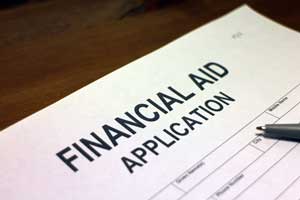Recent College Grads, Student Loans and Unemployment

Each issue of The Regional Economist, published by the Federal Reserve Bank of St. Louis, features the section “Ask an Economist,” in which one of the Bank’s economists answers a question. The answer below was provided by Research Officer and Economist Alexander Monge-Naranjo.
Recent college graduates have a higher chance of unemployment than their more experienced counterparts. How could student loans be designed to mitigate this risk?
Unemployment is an important risk for recent college graduates, who typically have little labor market experience, especially related to their field of specialization. Although unemployment insurance exists, workers need to be experienced to qualify. Furthermore, student loan programs do not account for the fact that finding a good-paying job may take a while; repayment is expected to start soon after graduation, although some loans do provide a grace period. Hence, these two programs do not offer much help to fresh college graduates who don't find a job right away. My recent research looks at ways to mitigate the burden for those who are in this situation.
In an article in the Federal Reserve Bank of St. Louis' Review, I showed how the design of student loans could mitigate the unemployment risk for recent graduates.1 I found that unemployment compensation would be a key element of the optimal student loan program, whereby the student would receive financing not only for the time in college but also for the time until the student finds a job. An important feature of the optimal program is that the unemployment benefits received and the debt balance would depend on the length of the unemployment spell. In particular, to keep the recent graduate motivated to seek a job, the unemployment benefits should decline as the person remains unemployed, and also the amount of debt the person should pay must be increasing with the length of the unemployment. If well-designed, such a scheme would provide the optimal balance between insurance against the risk of unemployment and providing the right incentives to look for a job. Such schemes can be made revenue-neutral (on average), so taxpayers would not need to finance any deficits from the programs.
Notes and References
1 Monge-Naranjo, Alexander. "Student Loans Under the Risk of Youth Unemployment." Federal Reserve Bank of St. Louis' Review, Second Quarter 2016, Vol. 98, No. 2, pp. 129-58.
Additional Resources
- Regional Economist: Ask an Economist
- On the Economy: Jobs Found through Referrals Pay More
- On the Economy: How Has Unemployment Rate Recovery Varied across the Country?
Citation
ldquoRecent College Grads, Student Loans and Unemployment,rdquo St. Louis Fed On the Economy, Sept. 19, 2016.
This blog offers commentary, analysis and data from our economists and experts. Views expressed are not necessarily those of the St. Louis Fed or Federal Reserve System.
Email Us
All other blog-related questions

